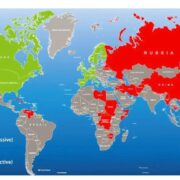In the modern digital age, where data reigns supreme and cyber threats are omnipresent, a quiet revolution is reshaping the way we protect our virtual assets. Artificial Intelligence (AI), once a futuristic concept, has now become both the guardian and the aggressor in the world of cybersecurity. As AI continues to evolve, it is increasingly at the forefront of the digital battle a double-edged sword that enhances security while simultaneously introducing new threats.
“AI in cybersecurity is like fire it can warm your house or burn it down,” explains Dr. Panashe Chiurunge, an expert in AI integration within cybersecurity and digital forensics. This analogy captures the paradox of AI in the digital realm, where its potential for good is matched by its capacity for harm.
Since 2022, AI’s role in cybersecurity has evolved at an unprecedented pace. Intelligent agents are now integral to identifying and neutralizing cyber threats in real time. However, their influence stretches beyond defense; AI is also revolutionizing digital forensics. Today’s forensic tools, including advanced Large Language Model (LLM) frameworks, have made it possible to reconstruct digital crime scenes with an accuracy and speed that were unimaginable only a few years ago. Investigators are now able to extract and interpret evidence more efficiently than ever before, reshaping the landscape of digital crime analysis.
But with the rise of sophisticated defense mechanisms, cybercriminals have adapted, deploying equally advanced tactics. Hyper-personalized phishing schemes, deepfake-driven misinformation, and adaptive malware that evolves to evade detection are just some of the new AI-driven threats. This creates a precarious balance: the very technologies designed to defend us are now being weaponized by malicious actors.
In response, a new approach is emerging in the field of cybersecurity—preventative forensics. Rather than merely reacting to attacks, AI is now capable of identifying and neutralizing threats before they fully materialize. This shift toward proactive defense is bolstered by the development of Model Context Protocol (MCP), a novel framework that enables seamless collaboration between AI models and agents across different platforms.
However, as this digital arms race intensifies, the need for regulation and ethical guidelines becomes paramount. The integration of AI into cybersecurity and digital forensics is no longer a distant possibility—it is our current reality. With every digital interaction, individuals and organizations alike are becoming participants in this evolving battle.















Comments